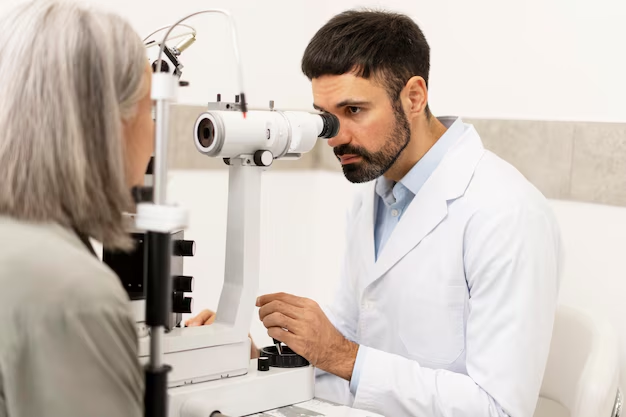Can Cataract Surgery Be Redone? Exploring the Possibilities and Considerations
Imagine regaining your vision, only to find out problems persist even after cataract surgery. It's a situation that many patients hope to avoid, but when issues arise, a common question is whether a cataract surgery can be redone. This inquiry opens the door to a range of considerations, including potential outcomes, risks involved, and the broader implications for eye health.
🌟 Understanding Cataract Surgery
Cataract surgery is a common procedure aimed at restoring vision by removing the cloudy lens and replacing it with an artificial one, known as an intraocular lens (IOL). It's generally safe and effective, with many patients experiencing significant improvements in vision.
However, like any surgical procedure, there can be complications or unsatisfactory results, leading some to question whether the procedure can be performed again.
When Might a Redo Be Considered?
There are several reasons why a patient or doctor might contemplate repeating cataract surgery:
- Residual vision issues: If vision does not improve after the initial surgery.
- Positioning problems with the IOL: The artificial lens may shift, leading to blurriness.
- Secondary cataract: Over time, some patients develop a "secondary cataract," or posterior capsule opacification (PCO), which can obscure vision.
- Infections or inflammation: Despite measures to prevent them, these complications may necessitate further surgical intervention.
🔍 Diving Deeper: Can Cataract Surgery Be Redone?
While technically a cataract cannot return, secondary cataracts or other complications can necessitate additional procedures. A redo of the initial surgery implies something other than the original operation needs attention. Here’s what that might entail:
Exploring YAG Laser Surgery
One of the most common follow-up procedures for a "secondary cataract" is YAG laser capsulotomy. This is not a repeat of the original surgery but a simple laser treatment to improve vision by creating a clear path for light to reach the retina. It's typically a quick, outpatient procedure with minimal recovery time.
When Would a Revision Surgery Be Necessary?
In certain cases, primarily related to issues with the IOL's positioning or other surgical complications, a more invasive approach might be needed. Here’s when and why a revision surgery can be considered:
- Malpositioned IOLs: If the artificial lens is not correctly aligned, impacting visual quality.
- Wrong Lens Power: Occasionally, the lens power selected might not perfectly address the patient’s vision needs.
In such cases, an ophthalmologist may decide to replace or adjust the lens. The decision involves evaluating the potential benefits against the risks and the patient's overall health.
🛠️ Risks and Considerations of Repeat Surgery
Both YAG laser treatment and revision surgery have associated risks, although they differ.
YAG Laser Risks
- Retinal detachment: Although rare, it's a notable risk.
- Increased intraocular pressure: Usually short-term but needs monitoring.
Risks of Revision Surgery
Redoing surgery on the eye is inherently more complex than the initial operation. Here are some risks to consider:
- Infection and Inflammation: As with any surgery, these are possibilities, and care should be taken to minimize them.
- Damage to the Eye: Increased risk due to potential scarring or fragile tissues from the initial surgery.
- Unpredictable Outcomes: The eye's response might differ due to previous surgical interventions.
💡 What to Expect: Recovery and Outcomes
Recovery from YAG Laser Treatment
Most patients experience immediate improvement in their vision after YAG laser capsulotomy, with recovery typically being swift, and regular activities can usually be resumed within a day. Mild side effects include temporary eye pressure changes or floaters.
Recovery from Revision Surgery
The recovery from more invasive procedures requires more patience. Here, follow-up care is crucial, and healing might take longer than the first surgery due to the complex nature of the procedure.
Patients should:
- Follow the postoperative care plan diligently.
- Attend all follow-up appointments to monitor the eye’s healing progress.
- Communicate any atypical symptoms to their healthcare provider promptly.
🤔 Making the Decision: Consult with Your Ophthalmologist
The choice to consider repeat or additional procedures should not be taken lightly. Here’s how you can prepare for an informed discussion with your ophthalmologist:
- Understand your symptoms: Clearly articulate how your vision or eye feels post-surgery.
- Ask about alternatives: Explore non-surgical measures that might alleviate your concerns.
- Evaluate the risks: Weigh the potential benefits against the risks outlined by your ophthalmologist.
- Consider a second opinion: If unsure, consult another specialist to confirm the necessity of a secondary procedure.
🌿 Broader Implications for Eye Health
Improving and maintaining eye health goes beyond addressing cataracts or their complications. Here’s a concise list to help you focus on comprehensive eye care:
- 👀 Regular Eye Examinations: Regular check-ups can detect issues early.
- ☀️ UV Protection: Always wear sunglasses that block UVA and UVB rays.
- 🥗 Healthy Diet: Include nutrients supporting eye health, such as vitamin A, C, and omega-3 fatty acids.
- 🏋️♀️ Physical Activity: This boosts circulation, which is beneficial for the eyes.
- 🚭 Avoid Smoking: Smoking exacerbates oxidative stress, impacting eye health.
Eye Care Tips Summary 🌟
Here’s a quick recap of the essential tips discussed:
- Understand Vision Changes: Stay informed about typical post-surgery expectations to identify potential complications early.
- Consult Regularly: Maintaining a line of communication with your healthcare provider can prevent minor issues from escalating.
- Consider All Options: Evaluate non-invasive alternatives where possible before committing to surgery.
- Empower Through Knowledge: Being informed about eye health supports better outcomes and improved quality of life.
Taking these proactive steps will help ensure your visual journey is as smooth and successful as possible. The road to optimal eye health may require some bumps and adjustments, but with careful monitoring and informed decision-making, navigating through cataract complications can lead to a clearer, brighter vision for the future.
